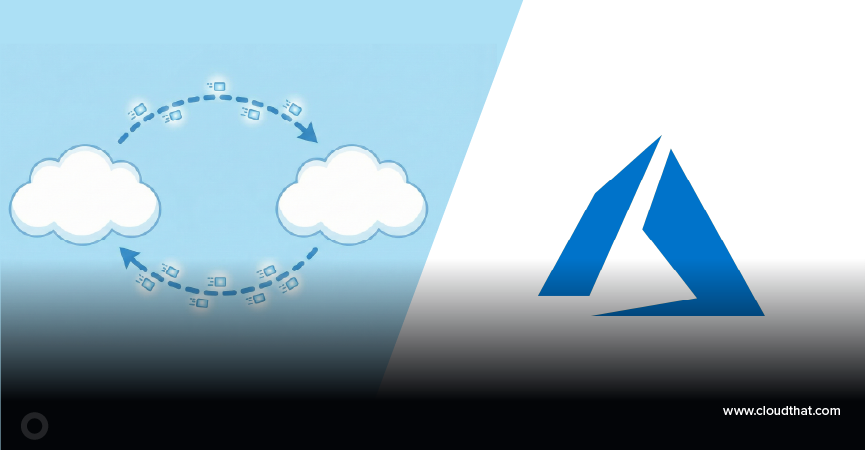|
Voiced by Amazon Polly |
Introduction:
In the ever-changing world of technology, creativity frequently develops at the crossroads of imagination and pragmatism. Among the many breakthroughs defining our digital future, Microsoft Fabrics stands out as an example of this confluence. Consider a digital tapestry woven with threads of efficiency, scalability, and seamless integration—this is the core of Microsoft Fabrics.
Pioneers in Cloud Consulting & Migration Services
- Reduced infrastructural costs
- Accelerated application deployment
Understanding Microsoft Fabrics:
Microsoft Fabric, also known as Service Fabric, is a distributed systems platform that simplifies the process of building and managing scalable and reliable microservices-based applications. Originally developed to power Microsoft’s own cloud services such as Azure SQL Database, Document DB, and Skype for Business, Service Fabric was later made available to developers as a standalone platform.
At its core, Microsoft Fabric provides a robust infrastructure for building and running distributed applications across clusters of machines. It abstracts away much of the complexity involved in managing distributed systems, allowing developers to focus on writing code rather than dealing with infrastructure concerns.
Key Features:
- Microservices Architecture
Microsoft Fabric embraces the microservices architectural style, which decomposes applications into smaller, independently deployable services. This approach offers numerous benefits, including improved scalability, resilience, and agility. Service Fabric provides built-in support for managing the lifecycle of microservices, including deployment, scaling, and monitoring.
- Reliable Services
Reliability is paramount in distributed systems, where failures are inevitable. Microsoft Fabric addresses this challenge through its reliable services model, which ensures that applications remain available and responsive even in the face of hardware failures or software updates. By leveraging features such as stateful services and reliable collections, developers can build highly resilient applications with ease.
- Scalability
Scalability is another critical aspect of modern applications, especially in the era of cloud computing. Microsoft Fabric offers seamless scalability both horizontally and vertically, allowing applications to handle increasing workloads with ease. Whether it’s adding more instances of a service or dynamically adjusting resource allocation, Service Fabric provides the tools necessary to scale applications efficiently.
- Programming Language Agnostic
One of the strengths of Microsoft Fabric is its language-agnostic nature. Developers can write microservices in a variety of languages, including C#, Java, and Node.js, among others. This flexibility allows teams to leverage existing skills and technologies, making it easier to adopt Service Fabric within their organizations.
- Health Monitoring and Diagnostics
Service Fabric includes robust monitoring and diagnostics capabilities, allowing developers to gain insights into the health and performance of their applications. With built-in support for metrics, logging, and tracing, teams can quickly identify and troubleshoot issues, ensuring that applications remain reliable and performant at all times.
The Threads of Fabric:
Azure Service Fabric: At the core of Microsoft Fabrics is Azure Service Fabric, an orchestration platform that facilitates the deployment, administration, and scalability of microservices applications. By abstracting the difficulties of infrastructure management, Service Fabric allows developers to focus on creating durable and scalable solutions.
Power Platform: Microsoft Power Platform is another critical thread in the fabric, providing a set of low-code development tools for creating apps, automating activities, and analysing data. Organisations may use Power Platform to expedite their digital transformation initiatives by empowering citizen developers and fostering large-scale innovation.
Azure Synapse Analytics: As data proliferates throughout organisations, the requirement for powerful analytics solutions grows. Azure Synapse Analytics, a sophisticated analytics tool, interacts easily with Microsoft Fabrics, allowing organisations to extract relevant insights from large datasets in real time.
Dynamics 365: Microsoft Dynamics 365 enhances the fabric by offering a full portfolio of business applications for sales, marketing, finance, and operations. Organisations may integrate their business operations and provide personalised customer experiences at all touchpoints by connecting Dynamics 365 with Microsoft Fabrics.
Real-World Applications:
Microsoft Fabric has been utilized in a wide range of applications across various industries. From e-commerce platforms to IoT solutions to financial services, organizations around the world rely on Service Fabric to power their mission-critical applications. Some notable examples include:
Azure Cosmos DB: Microsoft’s globally distributed, multi-model database service is built on top of Service Fabric, providing customers with a highly scalable and reliable database solution.
Dynamics 365: Microsoft’s suite of cloud-based enterprise applications leverages Service Fabric to deliver a seamless and scalable experience to users.
Adobe Spark: Adobe’s popular design platform utilizes Service Fabric to power its backend infrastructure, enabling rapid scalability and reliability.
Conclusion:
In the ever-evolving landscape of distributed systems, Microsoft Fabric stands out as a powerful platform for building and running microservices-based applications. With its robust features, scalability, and reliability, Service Fabric empowers developers to focus on innovation rather than infrastructure concerns. As organizations continue to embrace cloud-native architectures, Microsoft Fabric remains a key enabler of digital transformation, driving efficiency, agility, and resilience in today’s interconnected world.
Train your workforce to leverage the cloud
- Contemplating Migrating Workload to Cloud?
- Here is a Hassle Free Solution
About CloudThat
CloudThat is an award-winning company and the first in India to offer cloud training and consulting services worldwide. As a Microsoft Solutions Partner, AWS Advanced Tier Training Partner, and Google Cloud Platform Partner, CloudThat has empowered over 850,000 professionals through 600+ cloud certifications winning global recognition for its training excellence including 20 MCT Trainers in Microsoft’s Global Top 100 and an impressive 12 awards in the last 8 years. CloudThat specializes in Cloud Migration, Data Platforms, DevOps, IoT, and cutting-edge technologies like Gen AI & AI/ML. It has delivered over 500 consulting projects for 250+ organizations in 30+ countries as it continues to empower professionals and enterprises to thrive in the digital-first world.
FAQs
1. Why use Microsoft Fabric?
ANS: – Microsoft Fabric simplifies infrastructure management, supports stateful and stateless microservices, and enables seamless deployment across clusters, making it ideal for modern, cloud-native application development.
2. How does Microsoft Fabric benefit developers?
ANS: – Microsoft Fabric streamlines application development by providing scalability, high availability, performance optimization, agile development practices, DevOps integration, and support for hybrid and multi-cloud deployments.

WRITTEN BY Niti Aggarwal


 Login
Login


 March 25, 2024
March 25, 2024 PREV
PREV











Comments